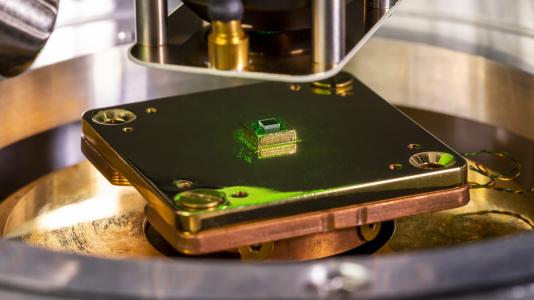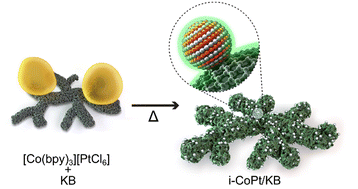ハワイ・マウナケアにあるW.M.ケック天文台の研究者たちは、木星の4つの主要な衛星すべてに可視波長のオーロラが出現していることを発見しました。イオ、エウロパ、ガニメデ、カリストです。 Astronomers using W. M. Keck Observatory on Maunakea in Hawaiʻi have discovered that aurorae at visible wavelengths appear on all 4 major moons of Jupiter: Io, Europa, Ganymede, and Callisto.
2023-02-16 カリフォルニア工科大学(Caltech)
<関連情報>
- https://www.caltech.edu/about/news/new-aurorae-detected-on-jupiters-four-largest-moons
- https://keckobservatory.org/jupiter-moons-auroras
- https://iopscience.iop.org/article/10.3847/PSJ/acb53c
- https://iopscience.iop.org/article/10.3847/PSJ/ac85b0
エウロパ、ガニメデ、カリストの光学オーロラ The Optical Aurorae of Europa, Ganymede, and Callisto
Katherine de Kleer, Zachariah Milby, Carl Schmidt, Maria Camarca and Michael E. Brown
Planetary Science Journal Published 2023 February 16
DOI:10.3847/PSJ/acb53c

Abstract
The tenuous atmospheres of the Galilean satellites are sourced from their surfaces and produced by a combination of plasma-surface interactions and thermal processes. Even though they are thin, these atmospheres can be studied via their auroral emissions, and most work to date has focused on their aurorae at UV wavelengths. Here we present the first detections of the optical aurorae of Ganymede and Callisto, as well as detections of new optical auroral lines at Europa, based on observations of the targets over 10 Jupiter eclipses from 1998 to 2021 with Keck/HIRES. We present measurements of O i emission at 6300/6364, 5577, 7774, and 8446 Å and place upper limits on hydrogen at 6563 Å. These constitute the first detections of emissions at 7774 and 8446 Å at a planetary body other than Earth. The simultaneous measurement of multiple emission lines provides robust constraints on atmospheric composition. We find that the eclipse atmospheres of Europa and Ganymede are composed predominantly of O2, with average column densities of (4.1 ± 0.1) × 1014 cm−2 and (4.7 ± 0.1) × 1014 cm−2, respectively. We find weak evidence for H2O in Europa’s bulk atmosphere at an H2O/O2 ratio of ∼0.25, and place only an upper limit on H2O in Ganymede’s bulk atmosphere, corresponding to H2O/O2 < 0.6. The column density of O2 derived for Callisto is (4.0 ± 0.9) × 1015 cm−2 for an assumed electron density of 0.15 cm−3, but electron properties at Callisto’s orbit are very poorly constrained.
木星の影に映るイオの光オーロラ Io’s Optical Aurorae in Jupiter’s Shadow
Carl Schmidt, Mikhail Sharov, Katherine de Kleer, Nick Schneider, Imke de Pater, Phillip H. Phipps, Albert Conrad, Luke Moore, Paul Withers, John Spencer, Jeff Morgenthaler, Ilya Ilyin, Klaus Strassmeier, Christian Veillet, John Hill and Mike Brown
Planetary Science Journal Published 2023 February 16
DOI:10.3847/PSJ/ac85b0

Abstract
Decline and recovery timescales surrounding eclipse are indicative of the controlling physical processes in Io’s atmosphere. Recent studies have established that the majority of Io’s molecular atmosphere, SO2 and SO, condenses during its passage through Jupiter’s shadow. The eclipse response of Io’s atomic atmosphere is less certain, having been characterized solely by ultraviolet aurorae. Here we explore the response of optical aurorae for the first time. We find oxygen to be indifferent to the changing illumination, with [O i] brightness merely tracking the plasma density at Io’s position in the torus. In shadow, line ratios confirm sparse SO2 coverage relative to O, since their collisions would otherwise quench the emission. Io’s sodium aurora mostly disappears in eclipse and e-folding timescales, for decline and recovery differ sharply: ∼10 minutes at ingress and nearly 2 hr at egress. Only ion chemistry can produce such a disparity; Io’s molecular ionosphere is weaker at egress due to rapid recombination. Interruption of a NaCl+ photochemical pathway best explains Na behavior surrounding eclipse, implying that the role of electron impact ionization is minor relative to photons. Auroral emission is also evident from potassium, confirming K as the major source of far red emissions seen with spacecraft imaging at Jupiter. In all cases, direct electron impact on atomic gas is sufficient to explain the brightness without invoking significant dissociative excitation of molecules. Surprisingly, the nonresponse of O and rapid depletion of Na is opposite the temporal behavior of their SO2 and NaCl parent molecules during Io’s eclipse phase.



